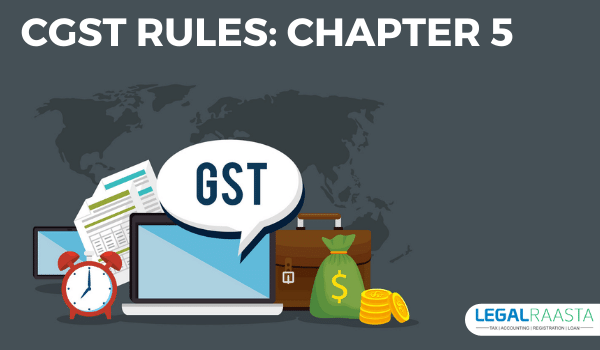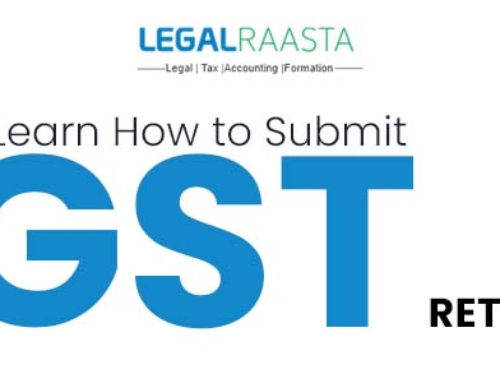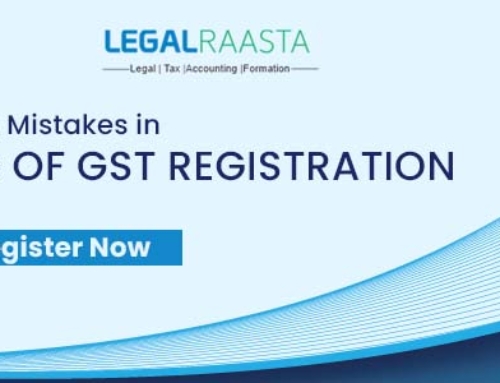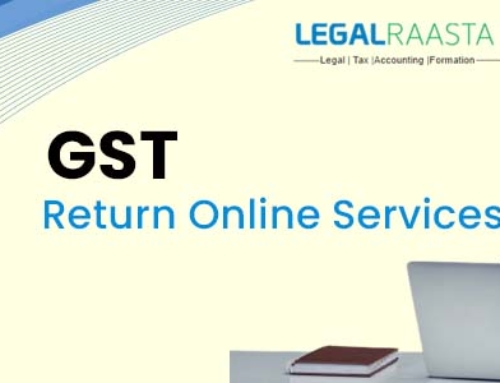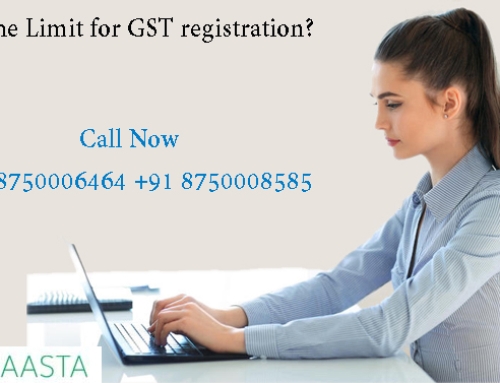The most recent update of Input Tax Credit
Contents
- The most recent update of Input Tax Credit
- Requirements and conditions for claiming the input tax credit in a documentary production
- Reversal of Input Tax Credit in the Case of Non-Payment of Consideration
- The claim of Credit by a Banking Company or a Financial Institution
- Procedure for Distribution of Input Tax Credit by Input Service Distributor
- Transfer of Credit on Sale, Merger, Amalgamation, Lease, or Transfer of a Business
- Manner of Determination of Input Tax Credit in respect of Inputs or Input Services and Reversal Thereof
- In Certain Cases, What is the Manner of Determination of Input Tax Credit in respect of Capital Goods and Reversal?
- Manner of Reversal of Credit Under Special Circumstances
- Conditions and Restrictions in Respect of Inputs and Capital Goods Sent to the Job Worker
28th May 2021: STR-6 is to be filed on the last day of April 2021 through GCS for April 2021, May 2021, and June 2021. GTS OPC should be utilized to comply with the CSTG’s Rule 36(4) Input Tax Credit, which permits applications to be submitted together in batches up until the end of June 2021.
1st May 2021: The provision prohibiting provisional ITC claims of less than 5% of GSTR-2B in GSTR-3B is relaxed for April 2021 under Rule 36(4) of the CGST Rules. The taxpayer may apply this rule over a period of two months, from April to May, and would be eligible for an additional discount.
1st February 2021: The Budget 2021 update changed Section 16 to allow taxpayers to claim the input tax credit based on GSTR-2A and GSTR-2B. The input tax credit may now only be claimed when the supplier has provided information about such invoice or debit note in the statement of outward supplies and transmitted them to the recipient of such invoice or debit note.
22nd December 2020: The Rule36(4) amendments from January 1, 2021, are:
- As per the invoices submitted by suppliers, the ITC shall be made available either on GSTR-1 or via Invoice Furnishing Facility (IFF).
- The amount of the recipients’ input tax credit can be claimed in GSTR-3B instead of the previous 10% of the overall ITC available in GSTR-2B for the month.
According to a new regulation 86B, certain taxpayers are unable to make payments from their electronic credit ledger in excess of 99 percent of the total tax liability for the tax period.
3rd April 2020: The CBIC has informed taxpayers that they may claim the input tax credit on their GSTR-3B return from February 2020 to August 2020, even though the rule excluding provisional ITC claims at 10% of the eligible ITC as per GSTR-2A is in effect.
The taxpayers must cumulatively adjust ITC according to the above procedure from February 2020, while filing the GSTR-3B of September 2020.
Requirements and conditions for claiming the input tax credit in a documentary production
On the basis of any of the following documents, a registered person, such as an Input Service Distributor, may claim the input tax credit:-
- An invoice that has been authorized in accordance with the requirements of Section 31;
- An invoice issued in accordance with clause (f) of sub-section (3) of section 31, subject to the payment of taxes;
- A supply bill issued in accordance with section 34’s conditions;
- A bill of lading, or any other document that fulfills the requirements of the Customs Act, 1962 or regulations made thereunder for assessing integrated import taxes;
- When you confirm the invoice, it is sent to an input service distributor. The amount has not been deducted from your bank account because of a credit note or other document issued by an input service distributor in accordance with the terms of sub-rule (1) of rule 54.
- Only if all of the required particulars are included in Chapter VI and all relevant information is supplied in FORM GSTR-2 by the person, may a registered person claim an input tax credit.
- No input tax credit can be claimed by a registered person in relation to any tax paid as a result of any order where demand has been confirmed owing to fraud, willful misstatement, or concealment of facts.
Reversal of Input Tax Credit in the Case of Non-Payment of Consideration
- A registered person who has received an input tax credit on any inbound supply of goods or services, but does not pay the supplier in full within the time limit specified in Section 16 subsection (2) subparagraph (b), shall bear all costs incurred by the supplying entity The month after the invoice was issued, such person shall submit in FORM GSTR-2 the details of such supply, the amount of value not paid to the supplier and the amount of input tax credit availed of proportionate to such amount not paid to the supplier within one hundred and eighty days: Provided that, for the purpose of the second proviso to subsection (2) of section 16, the value of materials produced without regard to consideration as specified in Schedule I of the said Act shall be deemed to have been paid.
- The input tax credit referred to in sub-clause (1) is added to the taxable output of the registered person for the month in which the information is provided.
- Interest at the rate specified in section 50(1) for the period beginning from the date of crediting such supplies until the date when the amount added to output tax liability, as stated in sub-rule (2), is paid shall be payable by the registered person.
- Sub-section (4) of section 16 does not apply to a claim for re-availing of any credit, in accordance with the Act or this Chapter, that had previously been reversed.
The claim of Credit by a Banking Company or a Financial Institution
The following procedure shall be followed by a bank or a financial institution, such as a non-banking financial company, engaged in the provision of services by accepting deposits or extending loans or advances that do not wish to comply with the restrictions in subsection (2) of section 17 –
- The person or institution named above will not receive the benefit of the credit,-
- The taxes paid on inputs and input services utilized for non-commercial purposes;
- The amount of credit for the commodities listed in sub-section (5) of section 17, shown on FORM GSTR-2;
- The credit of tax paid on inputs and input services referred to in the second proviso to sub-section shall be availed by the said business or institution.
- If you’re not sure whether anything in this list is covered under clause (a), check to see if it’s listed in section 17;
- The company or institution can claim an input tax credit of 50% on the remaining amount;
- The amount stipulated in paragraphs (b) and (c) shall be debited to the electronic credit ledger of the said firm or institution, subject to the terms of sections 41, 42, and 43.
Procedure for Distribution of Input Tax Credit by Input Service Distributor
- An Input Service Distributor shall issue input tax credits in the form and to the following specifications –
- The input tax credit that may be distributed in a given month shall be utilized in the same month and the details thereof must be provided in FORM GSTR-6, which is governed by Chapter VIII of these regulations;
- In accordance with clause (d), the Input Service Distributor must separately distribute the amount of ineligible input tax credit (ineligible under the provisions of sub-section (5) of section 17 or otherwise) and the amount of eligible input tax credit;
- The input tax credit on account of central, state, union territory, and integrated taxes is to be broken out in accordance with clause (d);
- In accordance with the provisions of clause (d) and (e) of sub-section (2) of section 20, a proportionate amount of the input tax credit is to be distributed to one of the recipients ‘R1′ registered or not, from among all the recipients to whom input tax credit is allocated, including those who are engaged in making exempt supply or are otherwise unregistered for any reason. The figure “C1” will be determined by using the following formula –
C1 = (t1÷T) × C
In a similar way, if “C” is the amount of credit to be distributed, 22 is the turnover, as referred to in section 20, of person R1 during the relevant period, and “T” is the aggregate of all recipients to whom the input service is attributable in accordance with section 20 regulations;
- Every recipient will get an input tax credit for integrated tax, which will be applied to the integrated tax that they must pay;
- On account of the combined federal and state tax, or a local tax levied by a Union territory, you will receive an input tax credit –
- Respect is given to a person in the same State or Union territory where the Input Service Distributor is located, and this credit is recognized as input tax credits of national (central) and state (territorial) taxes;
- In the case of a recipient outside the country of the Input Service Distributor, where applicable, be given as a unified tax and the amount to be so distributed shall equal the aggregate of the input tax credit plus any central or state/territory taxes that qualify for distribution;
- The Input Service Distributor shall produce an Input Service Distributor invoice, as specified in sub-rule (1) of rule 54, that clearly indicates that the invoice is issued solely for the distribution of input tax credit;
- In the event that the input tax credit has already been given out, the Input Service Distributor shall issue an Input Service Distributor credit note, as specified in sub-rule (1) of rule 54, for a reduction in credit;
- Any additional input tax credit on account of the supplier’s issuance of a debit note to an Input Service Distributor shall be paid out in accordance with clauses (a) through (f) and the amount attributable to any recipient shall be determined as provided in clause (d), and this credit should be distributed in the month when the debit note is included in FORM GSTR-6;
- If the input service distributor issues a credit note to the supplier in exchange for the original invoice, any input tax credit that must be reduced as a result of this will be apportioned equally among all recipients in proportion to how much of the total amount was distributed via clause (d) –
- The amount to be given out in the month when the credit note is included in the return on FORM GSTR-6 has been reduced; or
- The recipient’s adjusted tax liability is added to the output tax obligation of the donor, which is negative owing to the amount of credit under distribution being less than the amount that must be changed.
- If the amount of input tax credit distributed by an Input Service Distributor is decreased later on for any reason, including because it was given to the wrong recipient, by the Input Service Distributor, the procedure set out in clause (j) of sub-rule (1) shall apply, mutatis mutandis, for reduction of credit.
- In the event of credit, according to sub-rule (2), the Input Service Distributor shall issue an input service distributor invoice to the recipient entitled to such credit and include the input service distributor credit note and invoice in the return in FORM GSTR-6 for the month in which such credit note and invoice were issued, on the basis of the input service distributor credit note specified in clause (h) of sub-rule (1) –
Input tax credits in accordance with the provisions of sub-section (1) of section 18 on inputs acquired in stock, inputs contained in semi-finished or finished goods held in stock, or capital goods procured under clauses (c) and (d) of the said sub-section are subject to the following conditions –
- The input tax credit on capital goods, as set forth in sections (c) and (d) of sub-section (1) of section 18, may only be claimed after the tax paid on such capital goods is reduced by five percentage points each quarter for a year or part thereof from the date of the invoice or other papers on which the capital goods were received by the taxable person.
- The registered person shall within a period of thirty days from the date of his becoming eligible to avail the input tax credit under sub-section (1) of section 18 make a declaration, electronically, on the common portal in FORM GST ITC-01 to the effect that he is eligible to avail the input tax credit as aforesaid;
- Stocks of inputs, on the other hand, aren’t mentioned in this clause. The declaration under clause (b) should specifically identify the components stored in stock or included in semi-finished or completed goods, as well as capital goods –
- In the case of a claim under clause (a) of subsection 18(1), on the day immediately preceding the date from which he becomes liable to pay tax under the Act.
- On the day preceding the date of registration, in any case where a claim under clause (b) of subsection 18(1) is made;
On the day before his registration is effective, he must pay tax under section 9 from the date from which he becomes liable to pay it. In the case of a claim under clause (c) of subsection 18(1)
- In the situation of a claim under clause (d) of subsection 18(1), on the day immediately preceding the date when taxable supplies made by a registered person are due, for example;
- If the total amount of the claim owing to central tax, State tax, Union territory tax, and integrated tax is more than 2 lakh rupees, then the information in the declaration under clause (b) must be verified by a competent chartered accountant or a cost accountant;
- The input tax credit claimed under the provisions of clauses (c) and (d) of sub-section (1) of section 18 shall be verified using the supplied information from the corresponding supplier on the common portal or as the case may be, FORM GSTR- 4.
- The amount of credit for capital goods or plant and equipment, as defined in section 18(1), is determined by subtracting the input tax on the items at a rate of five percentage points per quarter or portion thereof from the date of issue of the invoice.
Transfer of Credit on Sale, Merger, Amalgamation, Lease, or Transfer of a Business
- In the event of a sale, merger, de-merger, amalgamation, lease, or transfer of ownership of a business for any reason, a registered person must deliver the details in FORM GST ITC-02 electronically on the same portal along with a request for transfer of unutilized input tax credit to the acquirer. Provided that in the case of demerging, the input tax credit shall be apportioned in proportion to the value of assets in new units as set out in the demerger scheme.
- The transferor must also submit a copy of a certificate issued by a practicing chartered accountant or cost accountant verifying that the sale, merger, de-merger, amalgamation, lease, or business transfer has been completed with specific provisions for the transfer of liabilities.
- The transferee shall, on the common portal, accept the information provided by the transferor, and, after such acceptance, the unused credit specified in FORM GST ITC-02 will be credited to his electronic credit ledger.
- The input and capital goods are given up by the seller shall be properly accounted for in the books of the acquirer.
Manner of Determination of Input Tax Credit in respect of Inputs or Input Services and Reversal Thereof
- In the case where the input tax credit in relation to inputs or input services that are eligible for subsubsection (1) or subsubsection (2) of section 17 is applied partly to business purposes and partly to other purposes, or in part for taxable supplies including zero-rated sales and also for non-taxable supplies, it shall be attributed as follows –
- Total input tax on inputs and input services for a given tax period is known as ‘T’ (denoted);
- The amount of input tax, out of ‘T’, accruing on inputs and input services intended to be used exclusively for purposes other than business is denoted as ‘T1′;
- The amount of input tax, out of ‘T’, attributable to inputs and input services intended to be utilized exclusively for producing exempt supplies, shall be designated as ‘T2′;
- The amount of input tax, out of ‘T’, on inputs and input services on which credit is not available under section 17(5) is referred to as ‘T3′;
- The amount of input tax credit credited to the registered person’s electronic credit ledger, known as ‘C1,’ is determined as follows: –
C1 = T- (T1+T2+T3)
- The amount of input tax credit that may be claimed on T4 forms for inputs and input services intended to be used exclusively for conducting supplies other than exempt items, including zero-rated products, should be referred to as ‘T4’;
- ‘T1′, ‘T2’, ‘T3’ and “t4” shall be identified and declared by the registered person at the invoice level in FORM GSTR-2;
- Common credit that remains after the attribution of input tax credits under clause (g) is referred to as C2, and it is shown as ‘C2′ in the calculation. C1 – T4;
- The amount of input tax credit granted to exempt purchases, known as ‘D1,’ is determined as follows: D1 = (E÷F) × C2, where E is the total value of exempt items sold during the tax period, and F is the entire turnover in the state of the registered person throughout the year: If the registered person has no turnover during the tax period or if the mentioned information is not accessible, ‘E/F’ shall be calculated by taking values of ‘E’ and ‘F’ from the last tax period for which turnover data are available, preceding to the month in which the “value of E/F” is to be determined;
Explanation: For the purposes of this clause, it is hereby clarified that any duty or tax levied under entry 84 of List I of the Seventh Schedule to the Constitution and entries 51 and 54 of List II of the said Schedule shall be excluded from aggregate value and turnover;
- If common inputs and input services are utilized partly for business and partly for non-business purposes, the percentage is known as ‘D2′ and should be set at 5 percent. of C2; in addition,
- The residual portion of the common credit shall be the qualifying input tax credit allocated to business and for supplying other than exempted supplies, as well as zero-rated items. It shall be referred to as ‘C3′ where – C3 = C2 – (D1+D2);
- The amount ‘C3’ shall be calculated separately for central tax, state tax, union territory tax, and integrated tax input credits;
- The amount equal to the sum of ‘D1’ and ‘D2′ should be added to the registered person’s output tax responsibility, provided that, where the charge for input taxes on input or input services utilized partially for non-business purposes has been calculated and separated at the invoice level by the registered person, it shall be included in ‘T1′ and ‘T2,’ respectively.
- The input tax credit determined in clause (1) shall be calculated finally for the year before the due date for submitting the return for September, which is after the end of the financial year to which it relates. The manner specified in sub-rule-
- If the aggregate of the amounts calculated at last in respect of ‘D1′ and “D2” exceeds the aggregate of the amounts determined under sub-rule (1) in respect of “D1” and “D2,” The amount by which the registered person’s output tax liability exceeds the actual taxes payable in a financial year shall be added to his or her resulting tax liability for that month not later than September of the next year, and the said individual will be penalized with interest on the said excess value at the rate specified in section 50(1) for a period starting April 1st of the following financial year and ending on the date of payment; or
- Where the aggregate of the amounts determined under sub-rule (1) in respect of ‘D1′ and ‘D2’ is greater than the aggregate of the amounts calculated finally in respect of ‘D1’ and ‘D2,’ such excess amount shall be credited to the registered person’s tax return for a month after September, which year-end was not later than that shown on his or her certificate.
In Certain Cases, What is the Manner of Determination of Input Tax Credit in respect of Capital Goods and Reversal?
- Section 16 (3) of the Act permits input tax credit in relation to capital goods that are eligible for the provisions of sub-sections (1) and (2) of section 17, which are partly used for business purposes and partly used for other reasons. The portion that is not utilized for business or forming taxable transactions such as zero-rated sales, however, shall be attributed to the purposes of business or engaging in taxable transactions such as zero-rated sales,-
- Basic input tax credits in the amount of $500 will be available to all enterprises eligible for a business input tax credit. The tax treatment and administration of capital goods used or intended to be used exclusively for non-business purposes, as well as those used or intended to be used exclusively for making exempt supplies, is covered by FORM GSTR-2;
- The amount of input tax in relation to capital goods utilized or intended to be used solely for the purpose of producing exempt supplies is shown in FORM GSTR-2 and must be credited to the electronic credit ledger;
- The amount of input tax for capital goods that are not covered by clauses (a) and (b), designated as ‘A,’ shall be credited to the electronic credit ledger, and such goods’ useful life shall be deemed to be five years from the date of the invoice for such products. provided that if any capital goods previously covered under clause (a) is then re-covered under this clause, the value of ‘A’ is calculated by decreasing input tax at a rate of five percentage points each quarter or portion thereof until ‘n’ is reached, and ‘A’ is credited to the electronic credit ledger;
Explanation: If a capital good is not covered by clause (a), it will not attract the provisions of sub-section (4) of section 18 if it is later covered by this clause.
- For a tax period, the sum of the values of ‘A’ credited to the electronic credit ledger under clause (c), denoted as ‘Tc’, shall be the common credit in respect of capital goods. Provided that if any capital goods covered by clause (b) are subsequently included under clause (c), the value of ‘A’ arrived at by lowering input tax at a rate of five percentage points for each quarter or part thereof shall be added to the aggregate value ‘Tc’;
- ‘Tm’ is the amount of input tax credit available for a tax period on common capital goods during their service life. Tc = Tc÷60
- The amount of input tax credit, at the start of a tax year, on all shared capital equipment with a useful life that extends beyond the tax year, shall be denoted ‘Tr’ and is equal to ‘Tm’ for all such assets;
- The proportion of general credit-related to exempt goods, known as “Te,” is calculated as follows: Te = (E÷ F) x Tr Where, E is the total value of exempt items produced during the tax period and F is the total turnover of the registered person throughout the tax period: If the registered person does not have any turnover during the specified tax period or if the aforementioned information is not accessible, then the value of ‘E/F’ shall be calculated by taking values of ‘E’ and “F” from the most recent tax period for which turnover details are available, preceding to the month in which this value of ‘E/F’ is to be determined.;
Explanation: For the purpose of this clause, it is stated that the aggregate value of exempt goods and the whole turnover should not include any duty or tax imposed under List I of the Seventh Schedule to the Constitution or List II entry 51 and 54;
- The quantity Te, as well as the applicable interest, should be added to the output tax liability of the person making such a claim of credit during each tax period of the useful life of the capital goods.
- The amount Te shall be calculated separately for each central tax, state tax, union territory tax, and integrated tax.
Manner of Reversal of Credit Under Special Circumstances
- The amount of input tax credit for inputs kept in stock, inputs present in semi-finished and completed products held in stock, and capital goods kept in stock shall be determined as follows for the purposes of subsection (4) of section 18 or sub-section (5) of section 29:
The input tax credit shall be calculated proportionately on the basis of the corresponding invoices on which credit had been availed by the registered taxable person for stock inputs and inputs contained in semi-finished and finished goods held in stock; The input tax credit associated with the remaining useful life in months shall be determined on a pro-rata basis, taking into account the useful life of five years.
Illustration: Capital goods have been in usage for four years, six months, and 15 days. In months, ignoring a portion of the month, the useful remaining life is 5. Input tax credit on such capital items = C The input tax credit attributable to the useful remainder of life is: C multiplied by 5/60
- The amount, as determined in sub-rule (1), shall be calculated differently for each of the four taxes included in this category: central tax, state tax, union territory tax, and integrated tax.
- Where the tax invoices for the inputs in stock are not available, the registered person may estimate the amount under sub-rule (1) based on the current market price of the goods on the effective date of any of the events specified in section 18 or, as applicable, section 29 subsection 4(4), or, as provided by law.
- The amount determined under sub-rule (1) shall be part of the registered person’s output tax liability and must be reported in FORM GST ITC-03, where such amount relates to any event specified in section 18(4), and FORM GSTR-10, where such amount relates to the termination of registration.
- The information specified in accordance with sub-rule (3) shall be properly certified by a practicing chartered accountant or cost accountant.
- The input tax credit for the purposes of subsection (6) of section 18 relating to capital goods shall be determined in the same manner as clause (b) of sub-rule (1), and the amount will be calculated separately for an input tax credit from central, State, Union territory, and integrated taxes. The amount so established shall be deducted from the output tax liability and submitted in FORM GSTR-1.
Conditions and Restrictions in Respect of Inputs and Capital Goods Sent to the Job Worker
- The primary shall issue a challan for the delivery of inputs, semi-finished products, or capital goods to the job worker, which will be covered by a receipt given to the principal.
- The official’s order to the job worker must contain the information outlined in rule 55.
- FORM GST ITC-04, which must be submitted for the quarter on or before the 25th of the month after it, includes pertinent information on challans in relation to goods dispatched to a job worker, received from a job worker, or sent from one job worker to another.
- If the inputs or capital goods are not returned to the originator within the time specified in Section 143, it shall be assumed that they were provided by the principal to the job worker on the day they were dispatched and that a supply was made. FORM GSTR-1.
Explanation: Purposes of this Chapter:
- The words “capital goods” shall be interpreted to include “plant and machinery,” as defined in the Explanation to section 17;
- Determining the value of an exempt supply as set out in subsection (3) of section 17 is always a difficult task.-
- The value of land and property shall be taken as if they were used to pay stamp duty for the purpose of this calculation; and
- The price of a security will be considered to be one percent of the security’s sale value.
Read, also: Section 194N: TDS on cash withdrawals

